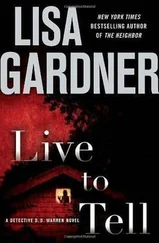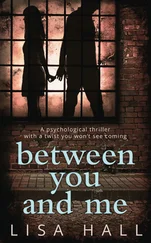Each item was removed, then bagged and tagged as evidence in the case the Boston cops would be building against me.
Finally, the nurse removed my gold stud earrings, my watch, and my wedding band. Can’t wear jewelry for the CT scan I was told as she stripped me bare.
The nurse handed me a hospital gown, then bustled away with her evidence bags and my personal possessions. I didn’t move. Just lay there, feeling the loss of my uniform, the shame of my own nakedness.
I could hear a TV down the hall broadcasting my daughter’s name. Next would come an image of her school photo, snapped just this October. Sophie wore her favorite yellow ruffled top. She was turned slightly sideways, looking back at the camera with her big blue eyes, an excited smile on her face because she loved pictures and she especially wanted this photo, her first since she’d lost her top front tooth, and the tooth fairy had brought her a whole dollar which she couldn’t wait to spend.
My eyes burned. There is pain, then there was pain. All the words I could not speak. All the images I couldn’t get out of my head.
The nurse returned. She stuck my arms in the Johnny gown, then had me roll to the side so she could tie it in the back.
Two technicians arrived. They whisked me away to the CT scan, my gaze locked on the blur of ceiling tiles whizzing by overhead.
“Pregnant?” one asked.
“What?”
“Are you pregnant?”
“No.”
“Claustrophobic?”
“No.”
“Then this will be a breeze.”
I was wheeled into another sterile room, this one dominated by a large, donut-shaped machine. The technicians didn’t let me stand, but hoisted me from the gurney directly onto the table.
I was instructed to lie absolutely still while the donut-shaped X-ray moved around my head, taking cross sections of my skull. A computer would then combine the two-dimensional X-ray images to form a three-dimensional model.
In thirty minutes, the doctor would have a graphic image of my brain and my bones, including any swelling, bruising, or bleeding.
The technicians made it sound very easy.
Lying alone on the table, I wondered how deep the scanner could peer. I wondered if it could see all the things I saw every time I closed my eyes. Blood, appearing on the wall behind my husband, then streaking down to the kitchen floor. My husband’s eyes, widening in surprise as he looked down, seemed to actually notice the red stains blooming across his muscled chest.
Brian sliding down, down, down. Me, now standing over him, and watching the light dim in his eyes.
“I love you,” I had whispered to my husband, right before the light fled. “I’m sorry. I’m sorry. I love you…”
There is pain, then there was pain.
The machine started to move. I closed my eyes and I allowed myself one last memory of my husband. His final words, as he died on our kitchen floor.
“Sorry,” Brian had gasped, three bullets in his torso. “Tessa… love you… more.”
With Brian Darby’s body removed, and Tessa Leoni whisked off to the hospital, the immediate practicalities of the homicide investigation began to wind down while the search for six-year-old Sophie Leoni ramped up.
With that in mind, D.D. summoned the taskforce officers to the white command van and began cracking the whip.
Witnesses. D.D. wanted a short list from all the uniformed officers of any and all neighbors worth a second interview. She then assigned six homicide detectives to begin those interviews ASAP. If someone was a credible witness or potential suspect, she wanted them identified and talking in the next three minutes.
Cameras. Boston was riddled with them. City installed them to monitor traffic. Businesses installed them for security. D.D. formed a three-man team whose job was to do nothing but identify all cameras in a two mile radius and skim through all video footage from the past twelve hours, starting with the video cameras closest to the house and working out.
Known associates. Friends, family, neighbors, teachers, babysitters, employers; if someone had ever set foot on the property, D.D. wanted their name on her desk in the next forty-five minutes. In particular, she wanted all teachers, playmates, and caretakers of Sophie Leoni rounded up and cranked through the wringer. Full background checks, a search of their homes if the detective could talk his way through the door. Officers needed to be eliminating friends and identifying foes and they needed to be doing it now, now, now.
Other people out there knew this family. Enemies from the husband’s job, felons snagged in Trooper Leoni’s patrols, maybe partners in torrid affairs, or longtime personal confidantes. Other people knew Brian Darby and Tessa Leoni. And one of those people might know what had happened to a six-year-old girl who’d last been seen sleeping in her own bed.
Time was not on their side. Get out, hit the streets, beat the clock, D.D. ordered her crew.
Then she shut up and sent them back to work.
The Boston detectives scrambled. The brass nodded. She and Bobby returned to the house.
D.D. trusted her fellow investigators to begin the enormous task of sifting through all the nuances of an entire family’s existence. What she wanted most for herself, however, was to live and breathe the victims’ final hours. She wanted to absorb the crime scene into her DNA. She wanted to inundate herself with the tiniest little domestic details, from paint choices to decorative knickknacks. She wanted to set and reset the scene a dozen different ways in her mind, and she wanted to populate it with a little girl, a merchant marine father, and a state trooper mother. This one house, these three lives, these past ten hours. Everything came down to that. A home, a family, a collision course of multiple lives with tragic consequences.
D.D. needed to see it, feel it, live it. Then she could dissect the family down to its deepest darkest truth, which in turn would bring her Sophie Leoni.
D.D.’s stomach flip-flopped queasily. She tried not to think about it as she and Bobby once again entered the bloodstained kitchen.
By mutual consent, they started upstairs, which featured two dormered bedrooms, separated by a full bath. The bedroom facing the street appeared to be the master, dominated by a queen-sized bed with a simple wooden headboard and dark blue comforter. Bedding immediately struck D.D. as more his than hers. Nothing else in the room changed her opinion.
The broad dresser, a beat-up oak, screamed of bachelor days. It was topped by an old thirty-six inch TV which was tuned to ESPN. Plain white walls, stark wood floors. Not so much a domestic retreat, as a way station, D.D. thought. A place to sleep, change clothes, then exit.
D.D. tried the closet. Three-fourths of it yielded sharply pressed men’s shirts, arranged by color. Then came half a dozen neatly hanging blue jeans. Then a mishmash of cotton slacks and tops, two state police uniforms, one dress uniform, and one orange flower-printed sundress.
“He took up more space in the closet,” D.D. reported to Bobby, who was examining the dresser.
“Men have been killed for less,” he agreed.
“Seriously. Check this out. Color-coded shirts, pressed blue jeans. Brian Darby was beyond anal-retentive and bordering on just plain freaky.”
“Brian Darby was also getting seriously huge. Look at this.” Bobby held up a framed eight-by-ten portrait with his gloved hands. D.D. finished inspecting the empty gun safe she’d found in the left-hand corner of the closet, then crossed to him.
The framed picture featured Tessa Leoni in the orange sundress with a white sweater, holding a small bouquet of tiger lilies. Brian Darby stood beside her in a brown sports jacket, a single tiger lily pinned to his collar. A little girl, presumably Sophie Leoni, stood in front of both of them, wearing a dark green velvet dress with a ring of lilies in her hair. All three were beaming at the camera, happy family celebrating a happy day.
Читать дальше






![Ally Carter - [Gallagher Girls 01] I'd Tell You I Love You But Then I'd Have to Kill You](/books/262179/ally-carter-gallagher-girls-01-i-d-tell-you-i-lo-thumb.webp)





